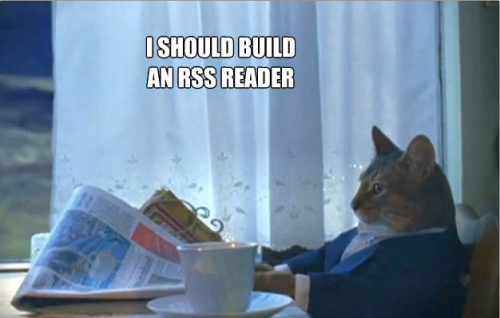Shared posts
Why is there Spring Snow in the Great Lakes?
Google’s Trust Problem
Ezra Klein:
But I’m not sure I want to be a Google early adopter anymore. I love Google Reader. And I used to use Picnik all the time. I’m tired of losing my services.
All companies cancel services and abandon apps. The difference with Google Reader is that they’ve canceled something beloved.
★Does Your Organization Have Social Media Guidelines for All Staff?
JeffkartAmen!
We adopted a set of Guidelines that TNT created (creative commons) to ENCOURAGE their staff to use social: bit.ly/YQe91n #npsmpeer
— Brian Fitzgerald (@brianfit) March 10, 2013
One of the basic tenets of my first book with Alison Fine, “The Networked Nonprofit,” was that everyone in the organization participates in social media from the executive director on down – not just the “social media person.” Having staff use social media as part of their work can extend the organization’s network and increase the organizational comfort level through regular practice. This was a big topic that was explored during the #npsmpeer workshop at SXSW. Brian Fitzgerald who works at Greenpeace and is an expat in Amsterdam tweeted an amazing example of employee social media guidelines.
Social Media Guidelines or what some call a social media policy summarizes your organization’s social media goals, how staff will participate (dos and do nots), identifies legal and privacy issues, a social media work flow, and staffing needs. The general tone should be one of trust and empowerment. All this should be communicated succinctly in a document that is based on discussion, roadshows, and training for staff on using social media effectively.
What I really like about the TNT document that Brian shared is its easy to digest and visual format. It begins with an overview of why the organization is using social media, goals, and a friendly invitation to employees to use the guide.
Dos and Don’ts
Social media response chart loosely based on the AirForce Blog Response Framework.
Does your organization have social media guidelines for all employees that strike a positive tone, easy to read and understand, and helps scale your organization’s social strategy? Tweet your questions and share your resources on Twitter using #npsmpeer hashtag.
The Send to Kindle Button
Sending web content to Kindle is now easier than ever.
We are excited to announce the "Send to Kindle Button", a convenient new way to send content directly from a website to your Kindle. Customers can check out the Send to Kindle Button today on The Washington Post, TIME, and the popular blog Boing Boing.
Have you ever encountered news, blogs, articles and other content on the web that you want to read but don't have time to do so immediately? The Send to Kindle Button lets you easily send that content to your Kindle to read later, at your convenience. Just send once and read everywhere on any of your Kindle devices or free Kindle reading apps for iPhone, iPad and Android phones or tablets. No more hunting around for that website or blog that caught your eye -- just open your Kindle and all the content you sent is right there. The Send to Kindle Button is also great for those who want to collect content from the web to use in work projects, school assignments, or hobbies.
The Send to Kindle Button is part of a family of Send to Kindle applications that make it easy for customers to send personal documents and web content to read on their Kindle. To find out more about other Send to Kindle applications for PC, Mac, Chrome, and Firefox, please visit www.amazon.com/sendtokindle.
If you happen to own a website and want to add the Send to Kindle Button, you can get it for free at www.amazon.com/gp/sendtokindle/developers/button or at http://wordpress.org/extend/plugins/send-to-kindle/ for WordPress bloggers.
Race Formula One tracks with Google Earth
We've seen quite a few driving games built on top of Google Earth over the years including Drive the A-Team Van and this great simulator from Katsuomi Kobayashi. Today's comes from "MisterFoley" and is a great take on Formula One racing.

They are a few 3D-rendered cars to choose from, and a handful of 3D objects around the course. What makes the game unique is the timing to rank the fastest drivers, and the fence around the course to keep you from cheating. I ran a couple of fast laps and didn't crack the top 10, but maybe you can do better!
There is currently only one track available (Albert Park Circuit in Melbourne, Australia) but more are expected to be added soon.
Give it a try for yourself at www.mister-foley.com/page/games![]() and see if you can make it onto the Top 10 fastest drivers list.
and see if you can make it onto the Top 10 fastest drivers list.
Google now allows you to visit Mt. Everest, Kilimanjaro, and other breathtaking locations
Jeffkartthis is as close as i'm going :)
 Now you can explore some of the most famous mountains on Earth, including Aconcagua (South America), Kilimanjaro (Africa), Mount Elbrus (Europe) and Everest Base Camp (Asia) on Google Maps.
Now you can explore some of the most famous mountains on Earth, including Aconcagua (South America), Kilimanjaro (Africa), Mount Elbrus (Europe) and Everest Base Camp (Asia) on Google Maps.
The secret sauce of message crafting: You are not your audience
Jeffkartgreat post. wise.
 When I'm working with clients to help them figure out what they want to say and how to say it, the most common message-crafting mistakes they make involve the audience. Or should I say they don't involve the audience?
When I'm working with clients to help them figure out what they want to say and how to say it, the most common message-crafting mistakes they make involve the audience. Or should I say they don't involve the audience?That's because mistake number one typically involves forgetting the audience entirely. As one of my scientist-trainees said, "I had no idea that I should take into account what the audience knows or wants to hear instead of what I want to say." I'd rather you took the approach of novelist Ursula K. LeGuin, who told an audience of graduating seniors, "I have no right to speak to you. What I have is the responsibility you have given me to speak to you."
Mistake number two, for speakers and communicators who do think about the audience: Confusing the audience with yourself. The most recent example comes courtesy of a Pew study that shows that most Americans under 30 don't know what "Roe v. Wade" was about--even though both sides of the abortion debate have long made it their shorthand for the 40-year-old abortion law. So every time that term is used, it loses people in that age group who are part of the intended audience. Even among Americans over 30, just over 60 percent knew what the term meant, not a ringing endorsement. I've seen the same thing happen with scientists who assume the public hates them or politicians who assume the opposite (neither of which is typically supported by data).
When communicators are prepping an expert or spokesperson, or getting in fights over particular favorite words and phrases, you often hear this expressed as "But I understood what that meant" or "But I think that sounds effective." Communicators make this mistake themselves, usually when they groan about using repetition of a message or tactics that help your messages stick with audiences. "I'm so tired of hearing this again," they'll say.
But you're not the audience, friends. And when we're working on a message, I don't want only you. I want your audience, in order for real communication to take place.
One reason I think spokesfolk make this mistake is that it's easier to go with what you want to say than to parse out who is in your audience. That's particularly true in the age of "the people formerly known as the audience," in which they, too, are communicators. For some experts, the idea that everyone may not accept or understand their views is anathema. To me, those are signs that you should be thinking more precisely about your targets and how they relate to your subject matter.
Put another way, the audience is your secret sauce when crafting a message. I know, you think the emphasis there is on "secret," and it's true that you won't be able to know everything about the audience you aim to reach. But the more you consider your audience, the better and more thoughtful your communications will be. Can you come up with a few profiles of the people you're trying to reach? Can you describe them in demographic terms? Can you think like a calendar to use the age of your audience as a guide to what they know, as in the Roe example above? Do you know anything about their preferences in terms of receiving and using information? Do you know their likely level of knowledge about your topic? Communicators have a critical role to play here by filling in the blanks for spokespeople and experts on their audiences. Starting to develop a message without your audience means they won't be with you when you need them most.
If you found this post useful, please subscribe or make a one-time donation to help support the thousands of hours that go into researching and curating this content for you:
| Option 1 : $10.00 USD - monthly Option 2 : $20.00 USD - monthly Option 3 : $30.00 USD - monthly Option 4 : $50.00 USD - monthly |
YouTube Is Teens' Top Social Network
Facebook lags. Teenagers use the internet while studying, playing sports, and attending religious services.

Adding to the growing list of signs Facebook's influence among young people may be waning, a new poll shows it lags behind YouTube in popularity. Ninety-three percent of the 13-to-18-year olds surveyed checked the video site at least weekly, while only 65% said the same for Facebook. Pollsters didn't ask about newer social networks, like SnapChat.
The poll, conducted by IPSOS MediaCT and Wikia, also found that teenagers are using smartphones, tablets, and computers to access the internet at pretty much all the times they're not supposed to. Fifty-six percent go online at church, the same percentage do so while doing homework, and 55% are online while playing sports. All of the 1,203 teens polled said they were online more than an hour a day.

Just look at this banana sculpture.
Jeffkartwhere does this go?

Just look at it.
fruit - Matt James Stone
(Thanks, Marie!)


